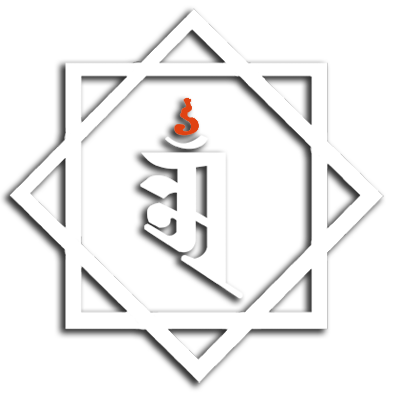Noosphere 2.1: The Saturn-Neptune 2026
The noosphere is a concept that emerged from the work of French philosopher, priest and paleontologist Pierre Teilhard de Chardin, alongside Russian geochemist Vladimir Vernadsky. It represents the third evolutionary phase of the Earth, following the geosphere (the inanimate physical Earth) and the biosphere (the sphere of living organisms). The noosphere, from the Greek "nous" (mind), is the sphere of human thought, where consciousness and intellectual activity shape and influence the world. It is seen as the collective mental and cultural space that envelops the planet, a product of human interaction and communication. Teilhard de Chardin proposed that as humans develop increasingly sophisticated means of communication, we contribute to the formation of a global consciousness, accelerating our collective spiritual and intellectual evolution.
This concept aligns with the idea that technological advancements, particularly in communication, are not merely tools for transmitting information but integral to humanity’s ongoing evolution. The noosphere grows as individuals and societies exchange ideas, collaborate, and influence each other’s thinking, creating an ever-expanding network of shared knowledge. With the rise of AI, we are in the process of letting loose technological advances the likes we have never seen. With humanity at this peculiar precipice in time, the possible significance of the Saturn-Neptune cycle seems particularly significant.
Themes in the Saturn-Neptune Cycle
Dissolution and Restructuring: Saturn represents structure, boundaries, and the imposition of material reality, while Neptune tends to symbolize dissolution, idealism, and the intangible. Together, their cycles reflect the process of dissolving old systems of communication (Saturn) and creating new forms that push the boundaries of what’s possible and and imagined (Neptune). Significantly, as a Vedic astrologer that incorporates the outer planets in my assessments, Neptune seems to have a connection to Viṣṇu māyā itself. Māyā, in Vedic philosophy is understood as the force of cosmic delusion.
The Global Mind: Neptune’s influence often expands communication technologies beyond national borders, fostering global connectivity. Saturn, however, is associated with the democratizing impact of technology, in that technology augments us. Take for example the impact of firearms on warfare, equipped with relatively simple mechanical device, an inexperienced and relatively weak soldier armed with a machine gun can take on an army of warriors who may be physically superior but only equipped with ‘primitive’ tech, such as swords and shields...
Information and Misinformation: Neptune’s tendency to blur boundaries is often evident in these cycles through challenges in distinguishing truth from illusion a presented by new communication technologies. This is particularly evident in the rise of propaganda, disinformation, and the challenges of digital media.
The Saturn-Neptune cycle has profound correlations with shifts in collective consciousness, social structures, and technological advancements, particularly in communication technology. Let’s explore how this cycle has played out historically, especially focusing on key periods of alignment (conjunctions, squares, and oppositions) between these two planets and their effects on communication.
1. Saturn-Neptune Conjunctions
1952-53 (in Libra): This period marked the widespread adoption of television, a communication technology that transformed mass media. The Saturn-Neptune conjunction in Libra, a sign of relationships and social exchange, coincided with television's growing role in shaping public opinion and connecting people across vast distances.
1989 (in Capricorn): The Saturn-Neptune conjunction in Capricorn marked the beginning of the modern internet era. The World Wide Web was invented in 1989 by Tim Berners-Lee, revolutionizing global communication. This period also saw the collapse of the Berlin Wall, symbolizing the dissolution of rigid structures (Saturn) and the rise of global connectivity and information exchange (Neptune).
2. Saturn-Neptune Squares
1971-72 (Gemini-Sagittarius axis): The early 1970s saw a major expansion of computer technology and early communication networks like ARPANET, the precursor to the internet. This was a time of significant breakthroughs in digital communication, and the square between Saturn (structure) and Neptune (imagination) created tension and innovation in the realm of how information was transmitted and shared.
2015-16 (Sagittarius-Pisces axis): This period coincided with the rise of social media platforms and the increasing influence of disinformation and "fake news." Neptune’s influence in Pisces blurred the lines between fact and fiction, while Saturn in Sagittarius (a sign associated with truth and broadcasting) tried to impose structure on the rapidly evolving digital media landscape.
3. Saturn-Neptune Oppositions
1936-37 (Gemini-Sagittarius axis): The opposition in the late 1930s took place during the rise of radio as a powerful tool for mass communication. It also coincided with the spread of propaganda leading up to World War II. Radio, a Neptunian medium, was harnessed (Saturn) to control narratives and influence public opinion on a scale never before seen.
1971-72 (again in the Gemini-Sagittarius axis): As mentioned, this opposition also marked the rise of communication technologies that would form the basis of today’s internet, leading to tensions between traditional media structures and emerging digital ones.
Looking Ahead: 2026 Conjunction (in Aries)
The next Saturn-Neptune conjunction occurs in 2026 in Aries, a sign of innovation and pioneering. We can expect significant advancements in communication technology, perhaps involving augmented reality, AI communication interfaces, or technologies that further dissolve the boundaries between physical and virtual spaces. However, Saturn is debilitated in Aries, challenging the democratizing effect of technology—we may therefore see the rise of an elitist technocracy during this new era of the noosphere.
Neptune in particular, is known for its boundary dissolving influence. Aries in traditional medical astrology is associated with the head, suggesting that technologies like Neuralink (brain computer interfaces) will proliferate, further erase the boundaries between humans and machines.
If anything, Meta’s unveiling of Orion (25 September), the company’s first true augmented reality glasses suggests that the anticipated blurring between the real and the virtual associated with the Neptune-Saturn conjunction will be something many of us will soon grapple with...
